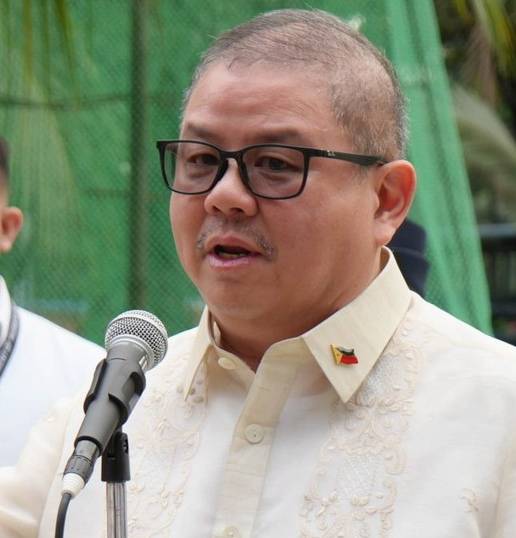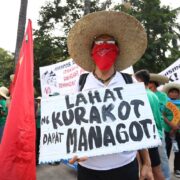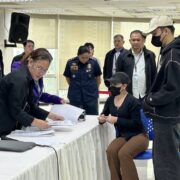An action plan for agriculture

As consumers continue to reel from high prices of rice and other commodities, it is upsetting to hear that nearly a third of the country’s agricultural production is wasted simply because of the poor logistics network in the supply chain. For the Filipino staple food, Agriculture Secretary Francisco Tiu Laurel Jr. last week disclosed that the country is losing as much as 15 percent of its rice production, or about 450,000 tons a year, because of the lack of post-harvest facilities. That is equivalent to P10.7 billion worth of rice, or an additional 23 days of inventory and approximately a tenth of the country’s rice imports.The only consolation for consumers in the wake of the billions of pesos in wasted production is that the new agriculture secretary, who took over from President Marcos only in November last year, is aware of the key problems besetting the sector, and is moving to address the issues head-on. Last week, Laurel and other Department of Agriculture (DA) officials met with the President in Malacañang to present the agency’s three-year plan. Dubbed the “Para sa Masaganang Bagong Pilipinas,” the targets of the plan are to increase agricultural productivity, lower food costs, ensure food security, and make farming and fisheries attract private investors.
Logistics system
There is nothing new here. Agriculture secretaries in the past had presented programs essentially with the same goals, but all failed in the implementation, leaving the sector in the sorry state it has been in for decades. Consumers can only hope that it will be different this time around. For one, Laurel is among the very few agriculture chiefs with a hands-on corporate background, coming from the Frabelle Group, a major player in the global commercial fishing industry. Thus, his priorities and strategies in tackling the problems hounding the farm sector may be different, and hopefully more effective, than the technocratic and bureaucratic style in the past.
The DA’s three-year plan involves mechanizing and modernizing agriculture and fishery. It also seeks to develop post-harvest systems and efficient logistics systems—the solution to the huge wastage in agricultural production. “If we can lessen, or hopefully almost eliminate, those losses, that will be equivalent to at least 10 to 15 percent less cost for our vegetables and high-value crops like fruits,” Laurel said. To help achieve this, the DA will appoint an assistant secretary solely for logistics to help minimize the costs for everyone involved, and in the process lower the cost of bringing the goods from the farms to the markets. Hopefully, this will eliminate unscrupulous middlemen who take advantage of both farmers and consumers. An important component of the program is the transitioning of the DA into a data-driven organization to address overproduction.
Post-harvest facilities
With the key problems identified, action plans have been lined up. But implementing them comes at a high cost. According to Laurel, the Philippines needs to invest at least P1.3 trillion over the next few years to boost rice production, reduce wastage of agricultural products, and ensure the country’s food security. He said irrigation of 1.2 million hectares of farmlands, planted mainly with rice, will require a budget of P1.2 trillion. Another P93 billion is needed to build integrated rice mills and warehouse complexes to reduce losses in rice due to the lack of post-harvest facilities. This vital component of agriculture has long been neglected. “No major post-harvest facility was funded by the government in the last 40 years. Mostly small, retail, which is actually irrelevant, useless. A waste,” Laurel lamented.
Now comes the biggest risk. As experienced in the past, many of the action plans suggested for developing the farm sector were stalled by a lack of funds. It is therefore important that the DA gets all the help to finance its three-year action plan.
Oversupply problem
Local government units, for instance, can address the oversupply problem as part of their devolved functions, according to Laurel. The Department of Trade and Industry can initiate the improvement of tax and other fiscal incentives for private companies investing in projects that will modernize the farm sector.
Lawmakers need to play a big role in pushing the agricultural plan forward, by ensuring enough funding is allocated for it. If lawmakers will shift their focus away from the divisive move to amend the Constitution and zero in on the more pressing issues of food and agriculture, perhaps doable solutions to the funding constraints of the DA’s plan can be crafted even now. The DA chief had said that he is also looking at pushing legislative reforms to update certain laws and regulations that will allow the agency to better respond to challenges facing the farm and fisheries sector, and lawmakers can focus on these measures instead. If the President exercises the political will to lead such an approach, he may finally fulfill his campaign promise to bring down the price of rice to P20 a kilo.

















